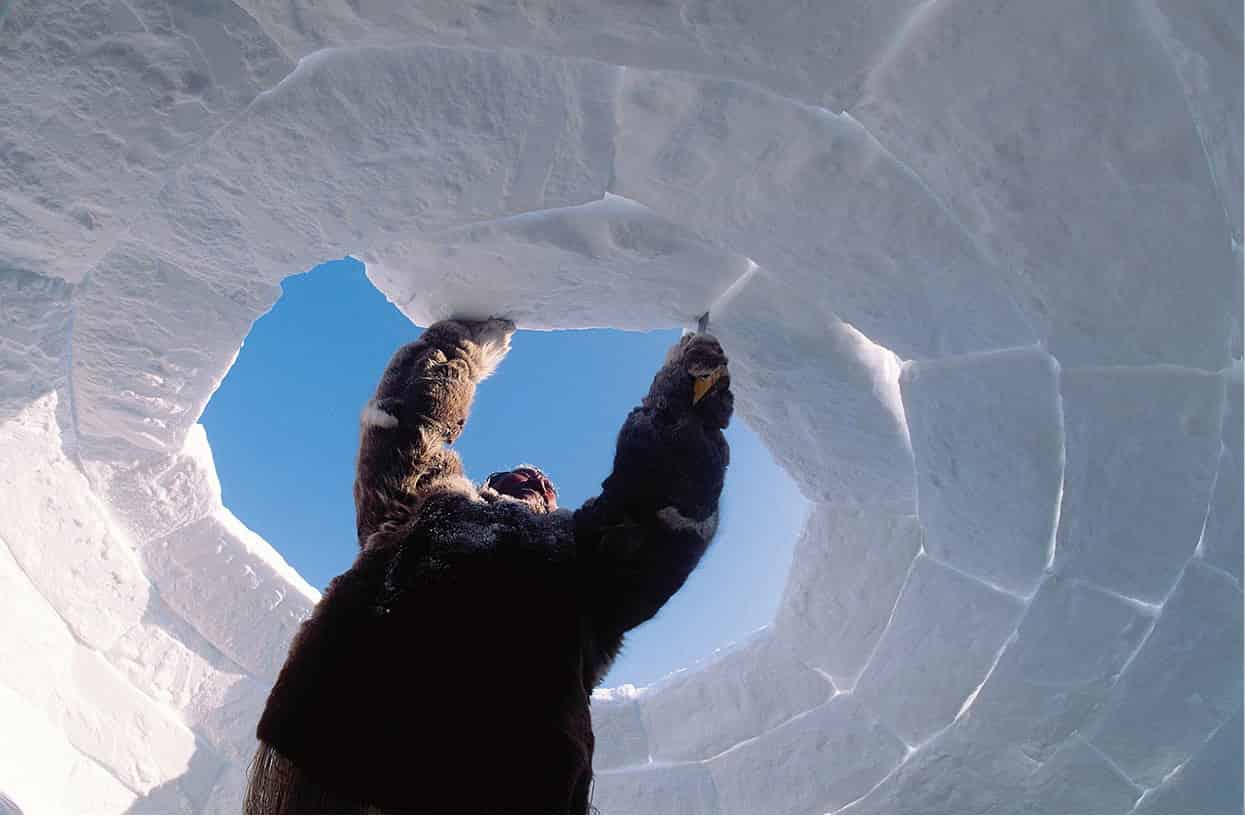
Igloo building began in the fall, when snow was compacted into blocks. The inhabitants depended on further snow for insulation.
TIPS
Snow angels practically define a Canadian childhood. You plonk yourself down on your back, flap your legs and arms up and down over the snow’s soft surface, then leap up to inspect the enchanting result. This instinctive communing with nature frequently launches a lifelong affair with snow. Every winter, lakes, rivers, even back yards, are converted into ice rinks, where youngsters play hockey and their parents simply skate. Countless Canadians are addicted to outdoor winter activities from skiing to snowshoeing, snowmobiling, dog sledding, ice fishing, and horse-drawn sleigh rides.
Indoor pursuits
Not all Canadians welcome snow with such enthusiasm. Fortunately winter also heralds a plethora of cultural activities, from experimental theater to symphony concerts and operatic galas, literary fests, and eye-popping art exhibits. Sports fans’ weekends revolve around Hockey Night in Canada, a long-standing Saturday-night TV fixture. January and February’s gloom is often brightened by extravagant culinary and wine-tastings, and by March stores are awash with sparkling springtime fashions and Easter bunnies.
In urban centers, snow is more easily avoided. From Calgary to Montréal, Canadians take refuge in networks of underground passageways where shops, restaurants, theaters, even ice rinks, offer diversions galore from the harsh reality of winter.
Survival in the Far North